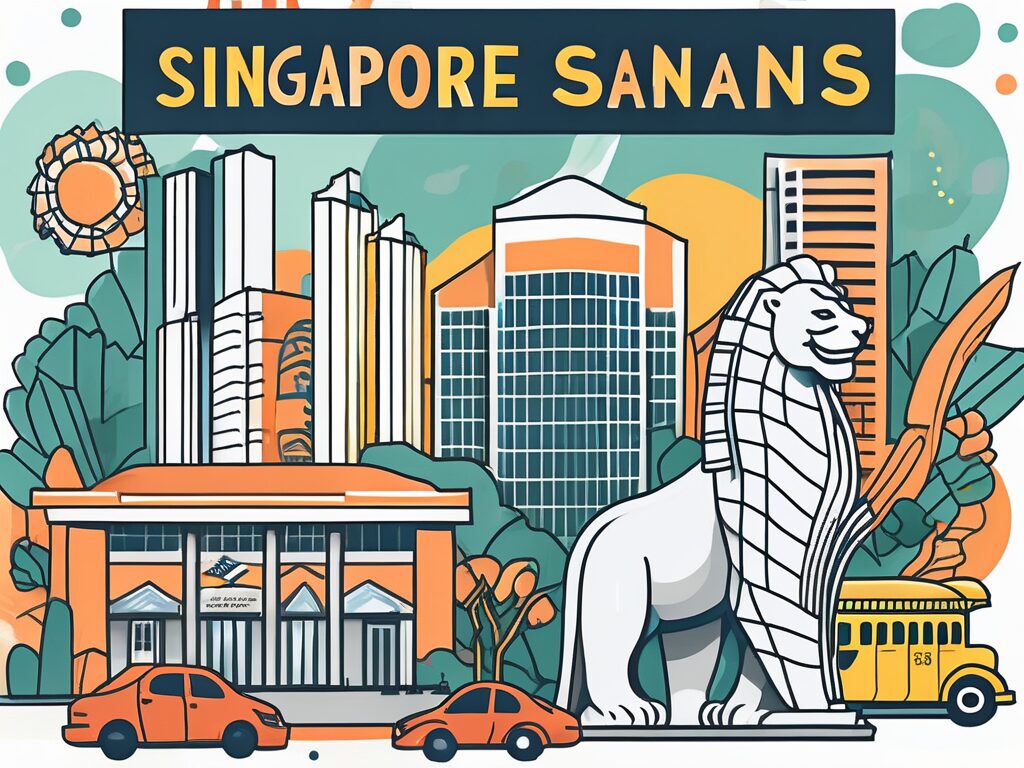Singapore, often referred to as the Lion City, is a vibrant and bustling metropolis that offers a unique blend of Eastern and Western cultures. With its high standard of living, excellent infrastructure, and multicultural society, it has become a popular destination for international teachers. However, the cost of living can be quite high, especially for those on a teacher’s salary. In this guide, we’ll delve into the cost of living for IPGCE international teachers in Singapore, providing seven key insights that will help you navigate the financial landscape of this dynamic city.
1. Accommodation Costs
Rental Prices
One of the biggest expenses for international teachers in Singapore is housing. The rental market in Singapore is competitive, and prices can vary greatly depending on the location and type of property. A one-bedroom apartment in the city centre can cost between SGD 2,000 to SGD 3,500 per month, while the same in the outskirts can range from SGD 1,500 to SGD 2,500. These prices are significantly higher compared to cities like Bangkok or Kuala Lumpur, where you can find similar accommodations for a fraction of the cost.
Buying Property
Buying property in Singapore is an option, but it’s not a financially viable one for most international teachers. The city-state has some of the highest property prices in the world, with a standard condominium in a central location costing upwards of SGD 1 million. Furthermore, there are restrictions on foreigners owning certain types of properties, making it a less attractive option.
2. Food and Dining
Eating Out
Singapore is a food lover’s paradise, boasting a diverse culinary scene that caters to all budgets. Eating out can be quite affordable if you stick to local hawker centres, where a meal can cost as little as SGD 3 to SGD 5. However, dining in restaurants, especially in touristy areas, can be pricey, with a meal easily costing SGD 20 to SGD 50 per person. This is comparable to dining out in major Western cities like London or New York.
Groceries
When it comes to groceries, prices can vary depending on where you shop. Local markets and budget supermarkets like FairPrice offer affordable options, while premium supermarkets like Cold Storage tend to be more expensive. On average, a monthly grocery bill for a single person can range from SGD 200 to SGD 400. This is relatively higher than in cities like Bangkok or Kuala Lumpur, but lower than in cities like London or New York.
3. Transportation
Public Transport
Public transportation in Singapore is efficient, reliable, and relatively affordable. A monthly travel card, which gives you unlimited travel on buses and trains, costs around SGD 120. This is cheaper than in cities like London, where a similar travel card can cost upwards of GBP 130.
Taxis and Ride-Sharing
Taxis and ride-sharing services like Grab are also popular in Singapore. While they are more expensive than public transport, they are still relatively affordable compared to other major cities. A short taxi ride can cost between SGD 6 to SGD 10, while a longer ride can cost between SGD 20 to SGD 30. This is cheaper than in cities like London or New York, where a similar taxi ride can cost significantly more.
4. Healthcare
The standard of healthcare in Singapore is high, but so are the costs. Even with a good insurance plan, you may still need to pay out-of-pocket for certain services. A general practitioner visit can cost between SGD 20 to SGD 50, while a specialist visit can cost between SGD 100 to SGD 200. These prices are comparable to those in the United States, but much higher than in countries with public healthcare systems like the UK or Australia.
5. Education
If you’re moving to Singapore with children, education costs can be a significant expense. International schools in Singapore offer high-quality education, but tuition fees can be steep, ranging from SGD 20,000 to SGD 40,000 per year. This is significantly higher than in countries like Thailand or Malaysia, where international school fees are generally lower.
6. Lifestyle and Entertainment
Singapore offers a wide range of lifestyle and entertainment options, but these can also add to your cost of living. A night out at a bar or club can be quite expensive, with a pint of beer costing around SGD 10 to SGD 15, and a cocktail costing around SGD 20 to SGD 25. This is comparable to prices in major Western cities like London or New York.
7. Taxes
One area where Singapore shines is its low tax rates. The income tax rate for foreigners is progressive and ranges from 0% to 22%, which is significantly lower than in many Western countries. This can help offset some of the high living costs in the city.
In conclusion, while the cost of living in Singapore can be high, especially in areas like housing and healthcare, it’s offset by factors like high salaries for international teachers, low taxes, and a high standard of living. By being mindful of your spending and making smart choices, it’s possible to live comfortably in this vibrant city.
Elevate Your Teaching Career in Singapore with IPGCE
Ready to tackle the high cost of living in Singapore and advance your teaching career? Join the UK’s #1 Teacher Training Course, the IPGCE, and transform your professional journey. Our program is designed to enhance your qualifications, increase your chances of landing interviews, and accelerate career progression. With the IPGCE, you’ll gain a deeper understanding of global education systems, connect with a worldwide network of educators, and enjoy the flexibility of online study. Don’t let inadequate credentials or isolation hold you back. Embrace the opportunity for a 30% salary increase and become 65% more adaptable in the international teaching landscape. Join the IPGCE program now and take the first step towards a thriving career in Singapore’s dynamic educational environment.

